A Visit to Bard College by jgn on Wednesday, July 4, 2018 in Colleges, College Visits, Liberal Arts, and Small Liberal Arts Colleges
On Monday (July 2, 2018) we visited Bard College in Annandale-on-Hudson. There's a stereotype of the rural/small town small liberal arts college: insular, conservative, etc. Bard breaks all of these stereotypes. At first it looks like most other small colleges: Rural with a pretty campus and engaged students. But Bard does everything differently. The first thing is the campus, which is large, about 1,000 acres. Other colleges that have a lot of property tend to have a big chunk of it in an eco-preserve or something similar (see: Vassar, Grinnell). But Bard's key buildings and resources are scattered across the entirety of the 1,000 acres. As a student, it can happen that you need to do a twenty minute walk to get from the economics building to other parts of the campus (fortunately, the students' advisors steer the students away from unfortunate schedules that would put classes in such places too close together in time). Bard also has been growing aggressively now for some 40 years owing to the leadership of Leon Botstein, who took over as President when he was about 30. Since then, he has overseen the establishment of the Bard Conservatory of Music, the Levy Economics Institute, and many other major enterprises. There are also Bard outposts in St. Petersburg, Berlin, Palestine . . . It's really amazing (I was reminded a bit of the growth of Ohio's Antioch College, but it would seem that Bard is doing something quite different, with deep integrations to local academic/civic culture; and, I would hope, on a more solid economic footing). Still, the core is a college.
What I really admire about Bard is its restlessness. It is obvious that the college has invested vast amounts of thought into its innovations. One thing you see at Bard are posters about the events and speakers that are resident or visiting campus, even during the summer. 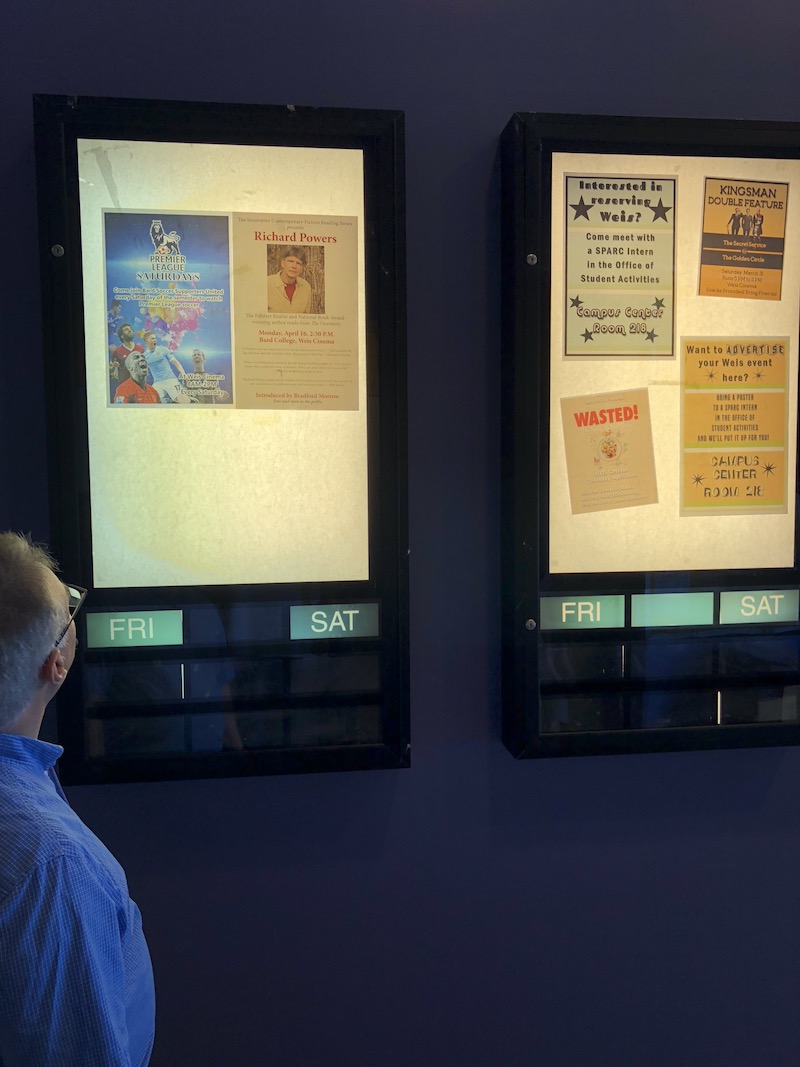 (As an aside, my impression is that there are far more opportunities for summer student work that at other colleges.) There are also posters advertising internally new initiatives such as an emergent "house" system to enhance students' situatedness in a complex academic environment. The campus is busy in a way I haven't seen elsewhere.
(As an aside, my impression is that there are far more opportunities for summer student work that at other colleges.) There are also posters advertising internally new initiatives such as an emergent "house" system to enhance students' situatedness in a complex academic environment. The campus is busy in a way I haven't seen elsewhere.
The admissions building is quaint and old with a large waiting area with stiff-backed chairs. 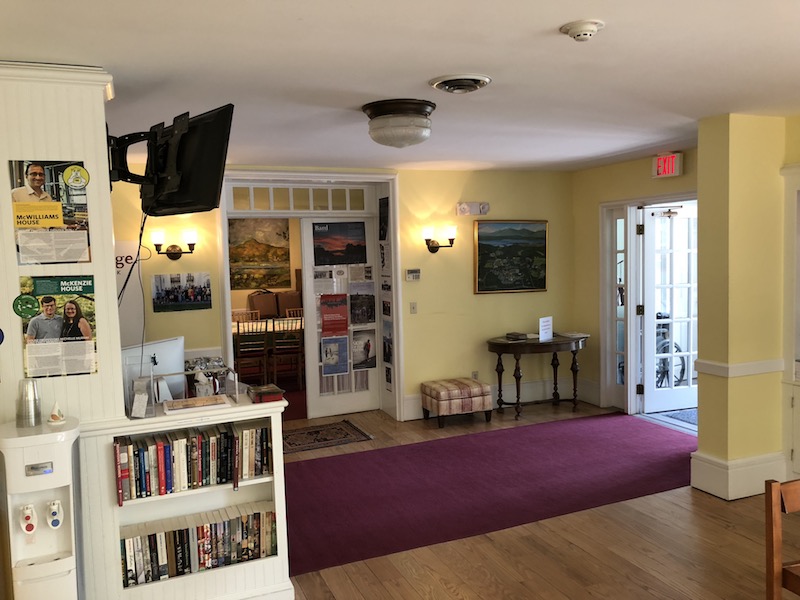 There were some 10 other young people waiting for a tour. I managed to snag a free pen. Caroline was intrigued by a printed pamphlet with a list of senior theses -- this was interesting to me because she has not taken much notice of college propaganda at other schools: This small paperback with paragraphs describing each project was far more engaging for her that the usual college publications.
There were some 10 other young people waiting for a tour. I managed to snag a free pen. Caroline was intrigued by a printed pamphlet with a list of senior theses -- this was interesting to me because she has not taken much notice of college propaganda at other schools: This small paperback with paragraphs describing each project was far more engaging for her that the usual college publications.
The admissions counselor came out, and he was remarkably low-key. He was dressed in twill pants, a knit shirt, and some soft-soled shoes: Quite a contrast to the jacket-and-tie approach we saw at Carleton. His intro was extremely brief, and then we were handed off to a tour guide. The guide was a theater major, and he was dressed in a t-shirt and shorts. As future readers will remember, July 2018 was a heat wave across the company, and Bard had bottles of water for us, which was a nice touch (Vassar didn't think of this). We toured the campus leveraging air-conditioning as much as possible.
Bard is spaced out differently from other campuses. They don't really have the traditional major square quad with everything grouped around the green (though there are smaller quads). Instead, the buildings were pleasantly spaced out. There were a lot of lived-in older buildings, but also some spanking new ones: The new science/computer building was an elegant steel and metal construction floating above the grass. On the inside, one thing that I found neat was there was space set aside for hardware experimentation: Haven't seen this at other institutions: 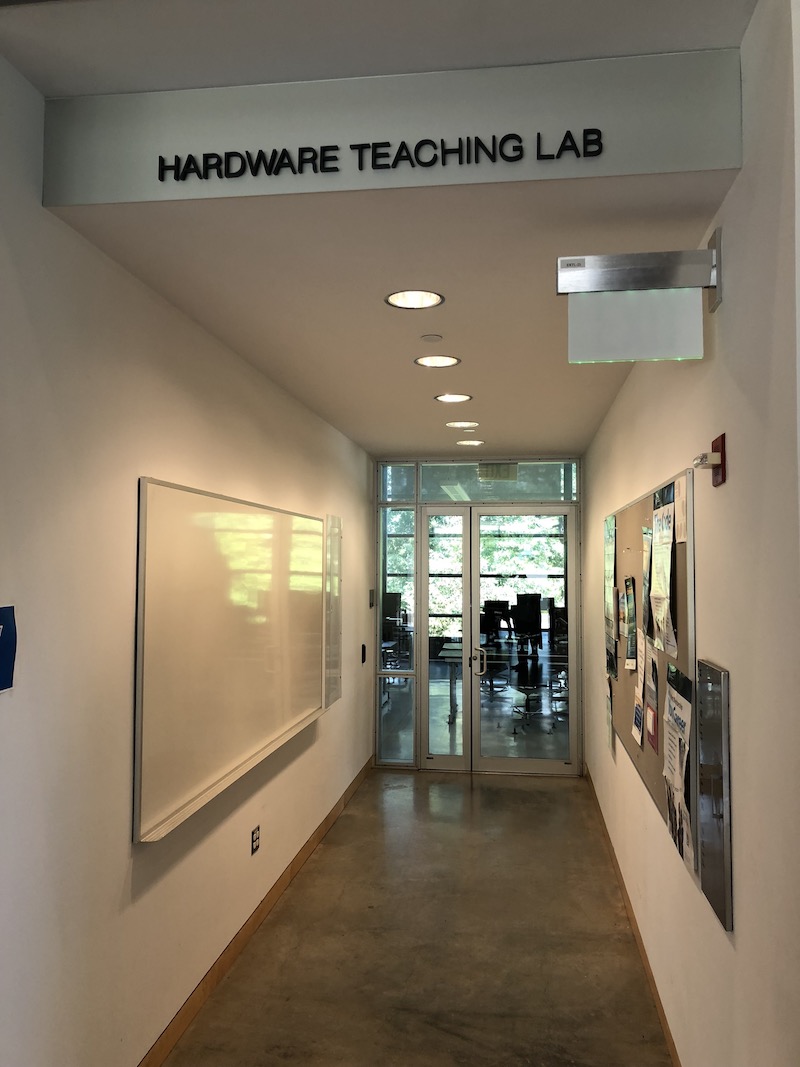
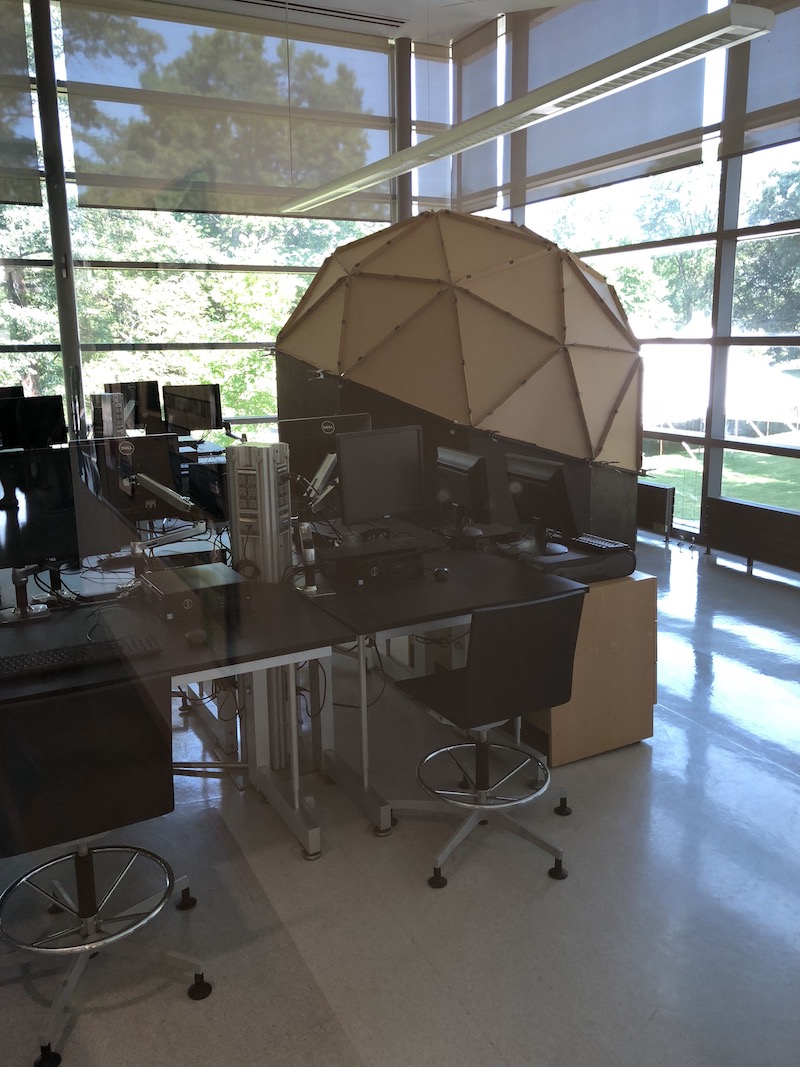 The old library was a made to evince a Greek temple: In keeping with the architectural fad of some years ago to have building extensions be in a radically different style, their library addon is extremely modern: The combination works.
The old library was a made to evince a Greek temple: In keeping with the architectural fad of some years ago to have building extensions be in a radically different style, their library addon is extremely modern: The combination works. 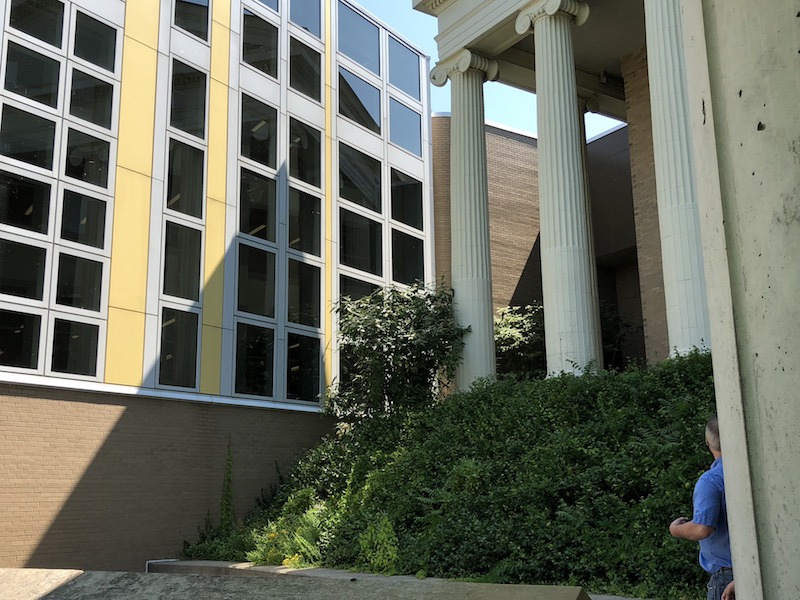
 They have a gorgeous new Frank Gehry which we observed from the car. The new buildings are spaced far enough from the old buildings that they don't clash. A highlight was visiting a canonical seminar room, which seems to be the dominant pedagogical arena at Bard: Precisely 14 chairs around tables in a circle.
They have a gorgeous new Frank Gehry which we observed from the car. The new buildings are spaced far enough from the old buildings that they don't clash. A highlight was visiting a canonical seminar room, which seems to be the dominant pedagogical arena at Bard: Precisely 14 chairs around tables in a circle. My daughter was engaged. The guide was very clear and well-rehearsed while not being stilted or boring.
After coming back there was some brief Q&A with the admissions officer: While he drilled down into the admissions process, he didn't belabor financial aid. Interesting.
Afterward we had lunch with an old classmate of mine, who is now Dean. She confirmed all of the great things about Bard, and we talked about her kids' experiences trying to find a college berth. Her great tip was: Don't bother with the open houses, because they are crowded, impersonal, and a "sell" (I didn't even know such a thing exists so I guess we won't miss much by skipping them).
comments powered by Disqus